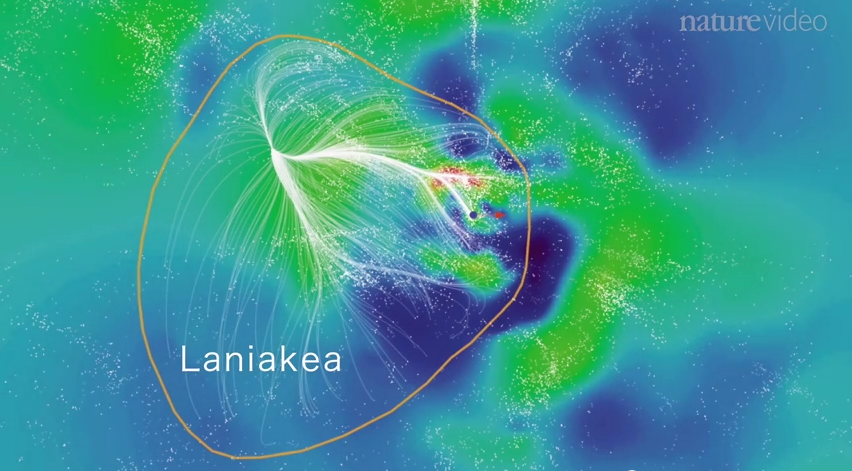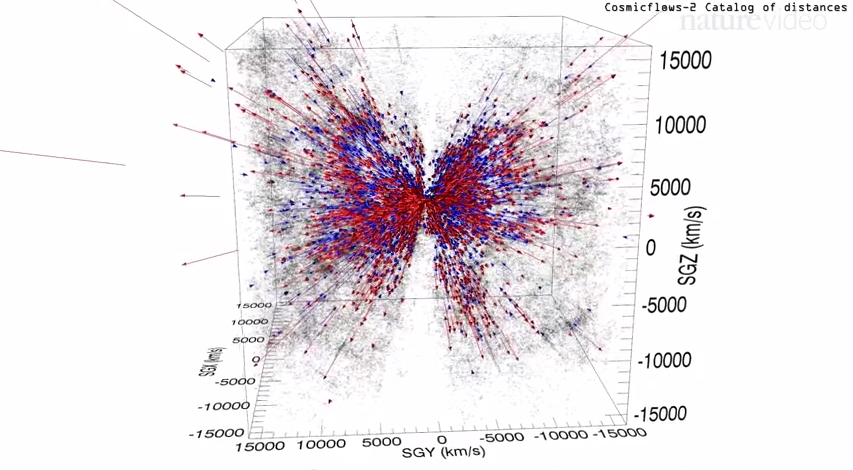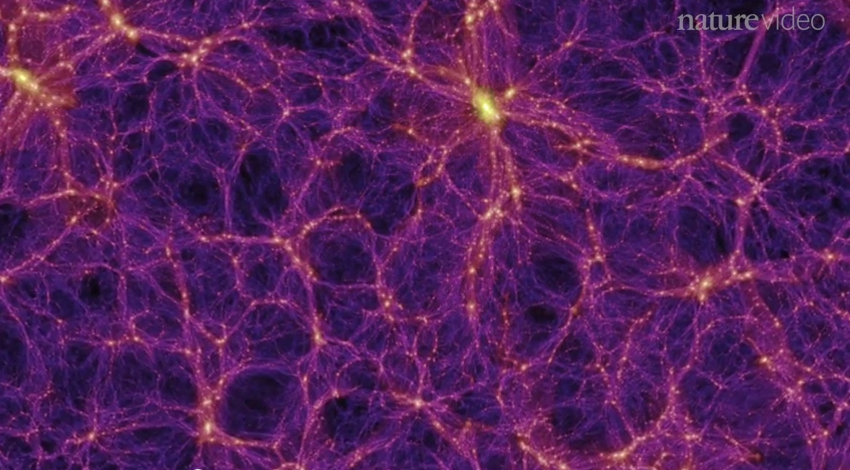This is the most detailed map yet of our place in the universeVox
Updated by Brad Plumer on February 11, 2015, 12:47 p.m. ET@bradplumerbrad@vox.com
 A new study in Nature finds that the Milky Way is part of a broader supercluster of 100,000 galaxies known as Laniakea. Nature Video
A new study in Nature finds that the Milky Way is part of a broader supercluster of 100,000 galaxies known as Laniakea. Nature VideoWe know that the Earth and the solar system are located in the Milky Way galaxy. But how, exactly, does the Milky Way fit in among the billions of other galaxies in the known universe?
In a fascinating 2014 study for Nature, a team of scientists mapped thousands of galaxies in our immediate vicinity, and discovered that the Milky Way is part of a jaw-droppingly massive "supercluster" of galaxies that they named Laniakea.
This structure is much, much, much bigger than astronomers had previously realized. Laniakea contains more than 100,000 galaxies, stretches 500 million light years across, and looks something like this (the Milky Way is just a speck located on one of its fringes on the right):
Say hello to Laniakea, our local supercluster
 (Nature Video, based on Tully et al 2014)
(Nature Video, based on Tully et al 2014)It's hard to wrap one's head around how enormous this is. Each of those points of light is an individual galaxy. Each galaxy contains millions, billlions, or even trillions of stars. Oh, and this all is just our little local corner of an even broader universe. There are many other galaxy superclusters out there.
So how did the researchers figure out this structure existed — and how did they distinguish it from other superclusters?
The team of scientists, led by R. Brent Tully of the University of Hawaii, first studied the motion of some 8,000 galaxies in our neighborhood. By doing so, they could map out certain patterns. The universe overall has been expanding ever since the Big Bang. But the team also found that gravity was pulling some galaxies toward each other.
That helped them build the graph below, where galaxies moving away from us are shown in red, and the galaxies moving toward us in blue.
The galaxies around us are moving in identifiable patterns
 Galaxies moving away from us are in red, those moving toward us in blue (Nature Video, based on Tully et al 2014)
Galaxies moving away from us are in red, those moving toward us in blue (Nature Video, based on Tully et al 2014)That, in turn, let them create a map of the pathways along which all the galaxies are moving and demarcate some boundaries.
The map below shows some of the pathways within our broader supercluster of galaxies. There's an especially dense region called "The Great Attractor" (in red) that's slowly pulling the Milky Way and many other galaxies toward it:
Many galaxies in Laniakea are being pulled toward the "Great Attractor"
 (Nature Video, based on Tully et al 2014)
(Nature Video, based on Tully et al 2014)What's interesting is that this structure is much bigger than anyone had realized. Astronomers had long grouped the Milky Way, Andromeda, and other galaxies around us in the Virgo Supercluster, which contained some 100 galaxy groups.
But as Tully and his colleagues found, and as the map above shows, this Virgo Supercluster is just part of a much, much bigger supercluster — Laniakea. (The name, aptly enough, means "immeasurable heavens" in Hawaiian.)
So what happens when we zoom out? The paper notes that Laniakea borders another supercluster known as Perseus-Pisces. And the scientists defined the borders as where the galaxies are consistently diverging:
Laniakea borders another supercluster: Perseus-Pisces
 (Nature Video, based on Tully et al 2014)
(Nature Video, based on Tully et al 2014)What happens if we zoom out even further? Even Laniakea and Perseus-Pisces are just one small pocket of the much broader universe. That universe consists of both voids and densely packed superclusters of galaxies. It looks something like this:
And... zooming out to the broader universe
 (Nature Video, based on Tully et al 2014)
(Nature Video, based on Tully et al 2014)We still don't have detailed maps of every last galaxy supercluster out there. But we now have one for our own home supercluster — and that's certainly a start.
Further watching: There's an excellent video from Nature breaking down the team's findings. The stills above come from that video.
http://www.vox.com/2014/9/4/6105631/map-galaxy-supercluster-laniakea-milky-way